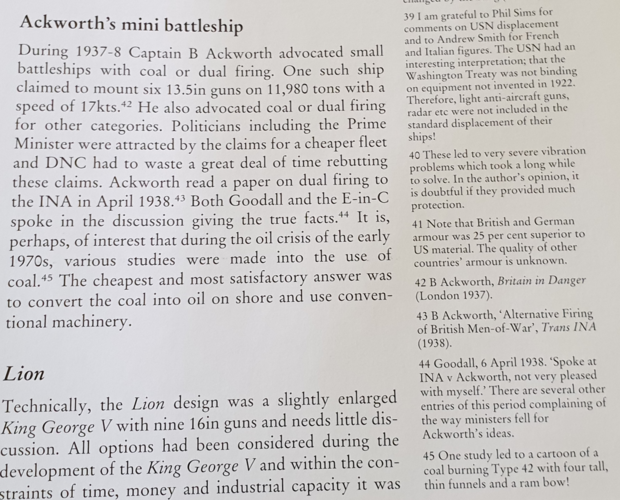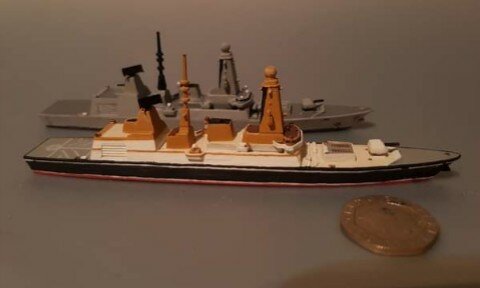MACHINERY
The obvious fuels for the future fleet are coal, oil and nuclear. Oil will get much more expensive, at least doubling in real price by the end of the century. However at that price level there are a number of low grade sources of oil, such as shale, which become viable, and it will be also be economic to convert coal into oil. The direct use of coal seems less attractive. Coates (Ref 10) has given a comparison of a coal fired Type 42(C) with HMS
Sheffield, Table 5. Nuclear power is very expensive and is only sensible for large (10,000-tonne), high speed ships which it is unlikely that the RN can afford.
It seems that the surface Navy is likely to use oil fuel well into the 21st century, possibly made from rich coal deposits under the UK. Modern gas turbines such as the SM1A (Spey) have a fuel consumption very similar to that of a diesel and are likely to be used for the bigger ships but diesels will increasingly be used for smaller craft.
TABLE 5: COMPARISON OF HMS SHEFFIELD AND A COAL FIRED TYPE 42
| Displacement (tonnes) | Power (MW) | Speed (Knots) | Crew | Cost Ratio |
| Oil | 4000 | 36 | 28 | 220 | 1 |
| Coal | 7500 | 40 | 28 | 330 | 1.4 |
REFERENCES
10 J F Coates RCNC (Contribution to RINA, 1979)



